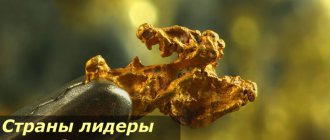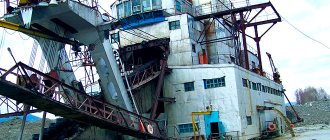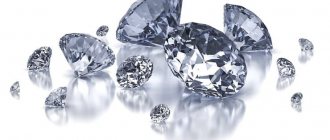In the Russian Federation, gold mining by individuals is prohibited. A bill that would allow all citizens to engage in small-scale mining has been under consideration in the Duma for almost seven years! Meanwhile, illegal gold mining in Russia is thriving. According to some sources, it amounts to up to ten percent of the total volume of gold mining in the country.
There was a short period in the history of the Russian Federation when the mining of precious metals and stones was allowed to all Russian citizens. In 1992, such a bill was adopted. The gold collection offices in Buryatia and Magadan started working belatedly.
And in 1998, the law was repealed: from that time on, only organizations that received licenses could engage in gold mining.
Illegal gold mining
In 2002, the Governor of the Krasnoyarsk Territory, Alexander Lebed, developed changes and additions to the law “On Precious Metals and Precious Stones”. Lebed proposed mining gold not only to organizations, but also to individuals who should obtain licenses for this. He was supported by the governor of the Magadan region, Valentin Tsvetkov. The bill was submitted to the State Duma, but it was not adopted.
The new bill “On the extraction of alluvial gold by individual entrepreneurs” under number 429535-5 appeared in 2010. It was adopted in the first reading, then the situation stalled. Meanwhile, the law is needed, and many in the gold-mining regions from the Urals to Magadan are waiting for it.
The number of deposits and mines in the country that are not of industrial importance, but contain some amount of gold, numbers in the thousands. Mining gold in them is profitable only for small entrepreneurs. A large organization will not go there, because it is not economically profitable for it to work at a facility where, for example, gold reserves are less than 10 kilograms. Therefore, such small deposits become targets for illegal mining of precious metals.
In Russia, illegal miners extract metal from placer deposits. Few people are engaged in mining in vein deposits. This practice is common in Kazakhstan, where people risk their lives by climbing into abandoned mines or paying security to allow them into protected mines.
A hundred years ago, 90 percent of the precious metal was mined from placers; today, no more than 14 percent. But industrial gold mining is mainly focused on the development of vein deposits.
Criminal prospectors of Kolyma
Private miners, whose activities are still prohibited in Russia, according to various estimates, range from five to fifteen thousand.
As you know, in Russia there is no free circulation of gold - only Gokhran and commercial banks authorized by it have the right to buy metal mined by miners. However, they are not the only ones involved in buying and selling gold.
Here are just a few of the messages that appear in newspapers with enviable regularity: “A resident of Magadan took 10 kilograms of gold,” “A resident of Magadan tried to sell 1.5 kg of gold,” “Gold worth 38 million rubles was seized in Magadan,” “ A passenger with a kilogram of gold chain was detained at the Magadan airport,” “A resident of Magadan mined and tried to sell gold for 21 million rubles,” “In Magadan, a former FSB investigator is being tried for theft of gold worth 22.6 million rubles,” etc.
What applies to precious metals and stones
The Criminal Code contains an exhaustive list of metals and stones prohibited from free circulation. These include:
- gold;
- silver;
- diamonds;
- sapphires;
- emeralds;
- alexandrites;
- rubies;
- amber;
- pearl.
In what form cannot all of the above be stored? Illegal trafficking and storage include:
- any nuggets of these metals and stones;
- any volumes of chemically pure metal, industrially purified from impurities;
- raw materials from these materials intended for industrial processing;
- any semi-finished products containing precious metals or stones;
- artificial alloys containing precious metal;
- coins that do not have official circulation at a given time in a given territory;
- any gemstones in their natural, untreated state.
More gold has always been mined in Russia
The industrial season for gold mining usually lasts four to six months a year, and most of the gold comes to the illegal market, of course, from the mines.
There are legends about how gold is stolen in artels. For example, a small metal box is cut into the lower part of a slurry pipeline that supplies a mixture of water, sand, clay and small pebbles for washing into an industrial device (light minerals and stones are carried away by water, but gold, as a heavier fraction, remains). The result is a trap for large metal. All that remains is to remove the catch every day, and since the insertion is done outside the washing area, there are no difficulties with the inspectors. However, controllers are not a problem - you can always settle all issues with them, especially when the nearest populated area is hundreds of kilometers away.
With the appropriate technology, it is possible to ensure that the flow of water washing the rock is stronger or weaker. In the first case, it will wash away the minerals of the heavy fraction (what miners call “dirt”), leaving almost “pure” gold, which is a violation: “fine” gold goes into dumps. Secondly, the percentage of losses will be significantly less, but the gold will be “dirty”.
In addition, gold is manually mined from waste dumps that have been worked out or missed by geologists, although this is prohibited. There are at least 5 thousand such miners in gold-mining regions. In total, illegal mining and theft from mines account for about 5% of all gold mined in Russia, that is, 6.5 tons per year.
Predators or prospectors?
Predators are people who mine gold without licenses or permits. The word was known even in pre-revolutionary Russia, since even in those days not everyone could obtain a license.
The predator's equipment has changed little over the century. These are a pick, a shovel, a tray, primitive devices for searching for gold. Few people use expensive modern means, as they may be taken away. And not only law enforcement agencies, but also crime.
All predators dream of getting rich, but only a few succeed. Even if a black miner attacked a gold-bearing site, selling what he found is a big problem. Most often, the predator himself becomes a victim of crime or envious fellow miners.
On the Internet you can easily find a lot of stories about successful miners who received prison sentences for their efforts, and whose gold was confiscated. A man in Buryatia washed gold all summer and washed about three kilograms. He was caught on the highway by FSB officers. Most likely, the lucky predator was betrayed by his fellow prospectors. The man was given a two-year suspended sentence and his gold was confiscated.
Mining precious metals using a tray is hard work. But he is illegal in Russia. Many miners die at the hands of bandits or in the taiga, left without help.
People do not become predators because they have a good life. Many people are driven to search not by a thirst for adventure, but by unemployment, a natural desire to feed their family.
Legalization of alluvial gold mining could solve a lot of problems.
- eliminate unemployment in many localities;
- attract people to the regions of Siberia and the Far East, where there is now a massive outflow of population;
- increase the production of precious metals in the country;
- fill the budget by donating legal gold to the population.
The artisanal mining method is very promising in many regions of Russia. Prospectors often find new deposits; such precedents have often happened in other countries. Many residents of Buryatia and the Magadan region are ready to look for gold in non-industrial placers, but only one factor holds them back - their activity will be considered illegal.
The best option for legalizing illegal gold mining is to sell licenses, as in Australia. A license to search and mine gold here can be purchased online for $30. Many tourists are attracted by this simple scheme, and they go to the fifth continent in search of gold. Australian statistics are modestly silent on how much each tourist finds on average, but any discovery of a nugget becomes the property of the press. Due to this, tourism in Australia is thriving.
Artisanal gold mining is illegal in many countries. Millions of people in Africa and Asia wash sand every day or climb into adits and mines at their own peril and risk. In Mongolia and Kazakhstan, black mining is widespread, but few people are punished for their activities. In Peru, a quarter of gold is mined illegally.
Illegal gold mining is rampant in South Africa and Ghana. According to some reports, about a million ounces of gold are mined illegally in South Africa alone. But miners cannot sell gold at normal prices in their country and go to Zimbabwe. Gold miners earn no more than five dollars a day.
Illegal business does not bring income to diggers and the state in any country in the world. Developing countries that are interested in developing gold mining are relaxing laws and encouraging gold mining. In many civilized countries, they do not neglect artisanal mining of precious metals and sell licenses without red tape and delays.
Mining gold from recycled materials
Gold illegally extracted from recycled materials also participates in the shadow trade. Recycled gold continues to enter illegal circulation, but it is unlikely that its volume exceeds 500 kg per year. Some recyclables are smuggled to the West through the Baltic states. The main products for recycling are civilian electronics and military equipment. For example, standard radar reconnaissance devices contain up to 2 kg of gold.
And finally, one of the sources of replenishment of the illegal market is the purchase of scrap gold and jewelry from the population. During the Soviet era, the population donated approximately 12 tons of gold items to government purchases. Now these volumes have decreased to ridiculous levels. Where is the rest? According to experts, every year up to 4 tons of metal, converted into pure gold, are bought from the population by illegal immigrants.
Over the past 100 years, 3.5 thousand tons of jewelry have accumulated in the hands of the population. Naturally, every year some of them surface on the market - up to 5 tons in terms of pure gold.
Procedure for obtaining official permission
How to obtain a gold mining license through official means:
- Registration of the status of individual entrepreneur and official taxpayer. For this you need:
- application in the prescribed form for registration;
- photocopy of passport.
- Site selection through Rosnedra agencies. The individual entrepreneur sends an application for a free territory and expects a response within a month;
- payment of the state fee to obtain a license - 7500 rubles;
- obtaining a license for private entrepreneurs through intermediaries. There are legal entities that help you obtain a license. This option speeds up the process of collecting and filling out documentation. Such a service for individual entrepreneurs will cost 100-200 thousand rubles.
Hidden precious metal reserve
More gold has always been mined in Russia than statistics showed. Scientists have come to the conclusion that there are two types of metal in the gold array of each placer. The first type is a gravitationally extractable metal, the extraction of part of which is ensured by industrial devices and dredges on which gold is washed today. The second type is “transit” metal, gold particles less than 0.05 mm thick, which during normal industrial mining and beneficiation are simply disposed of in dumps, often together with regular gold particles.
The mass of metal that literally slips through your fingers can be 1.5-5 times greater than the mass of the mined material. It is possible to extract it, but the usual methods of tray washing during geological exploration do not ensure complete extraction of the metal in the sample, the gold content in the placer is underestimated several times, and they do not even try to extract it - at least legally. By the way, in the dumps there is a lot of not only small, hard-to-reach “transit” gold, but also nuggets, which are also thrown into the dumps by outdated equipment. Craftsmen search for these nuggets using ordinary metal detectors.
The very fact of the presence of gold in technogenic deposits (as geologists call industrial dumps) is not news, but it is believed that the insignificant metal content makes recycling of dumps by industrial means low-profitability. However, scientists are willing to bet that, using their own original methods, geologists examined dozens of waste dumps, and the gold content was always several times higher than what was profitable for industrial mining. Moreover, the metal content often reached several tens of grams per cubic meter, especially on old pebble dumps, which are enriched by nature itself: weathering and rain concentrate the metal released from the pebbles in the lower part of the pebble dump, forming a layer enriched with gold. The illegal development of these resources, as well as deposits abandoned or missed by prospectors, provides up to 25% of the total illegal gold turnover.
This means the following. Often, next to gold mining enterprises, a satellite enterprise appears that processes waste. There is a practice of hiring freelancers by the artel, who manually wash the ephel more thoroughly, handing over what they have mined to the mine. But, since it is believed that the gold content in the dumps is negligible, only a small part of what is mined is handed over.
In a day, with careful work, a prospector can wash 0.3 cubic meters on a tray. If you install a so-called passageway (the simplest airlock made of three boards or roofing iron), you can wash up to 2 cubic meters. The yield of gold with this method can range from 150 mg to 5 g per cubic meter. Even if each of them mines at least 400 g during the washing season, we will already get 6 tons of gold. In general, I estimate the shadow turnover at at least 25 tons per year.
Illegal jewelry market
The Russian jewelry market is capable of absorbing no more than 10 tons of illegal gold per year. The rest settles abroad. A significant part of products made from unaccounted for gold is produced in illegal workshops scattered throughout Russia.
As a result, gold that is bought from the population, as well as stolen jewelry, flocks to jewelers. Regular pawn shops are often used to launder these flows. The products are handed over to the pawnshop, and then, if they are not redeemed (and, of course, they are not), the pawnshop, as expected, sells them at auction (the auction, of course, is held for its own people). Often, schemes for the development of shadow gold simultaneously use private purchasing, a pawnshop, jewelry production, and a consignment store.
Legalization of gold mining in Russia
Law enforcement agencies are asking to strengthen legislative control over the mining, processing and sale of gold in Russia. But the essence of the problem is that, in the opinion of a normal person, none of the crimes provided for in Article 191 of the Criminal Code (“illegal trafficking in precious metals, precious natural stones or pearls”) is actually a crime. From a moral point of view, free miners have every right to mine gold from abandoned mines. This means that no repressive measures will be able to destroy the existing infrastructure of the illegal market.
The problem must be solved radically - to allow free mining and the free purchase and sale of gold on the secondary market, in other words - to legalize the shadow trade. As a result, law enforcement agencies will be able to more effectively fight real criminals (for example, thieves of the same gold in the mines), and the state will receive new sources of tax revenue. And if Russian legislators had studied the world experience in this area, they would have learned that in the United States, after the ban on the free sale of precious metals was lifted in 1972, in a few years all the necessary tools for investors and speculators were created, as a result why on the gold exchange market the trading volumes were tens of times higher than the volumes of its global production.
A transparent market is always attractive to investors, and legalizing the purchase and sale of gold would contribute to the growth of the Russian gold mining industry, whose enterprises have long been in need of modernization.
Severe punishment
Our legislation has not remained favorable to predators; a person faces an article for illegal mining of precious metals. But the liability will not be criminal, but administrative, unless, of course, the prospector managed to find and mine several kilograms of gold.
So, what to expect from the punishment:
- Article 19.14 of the Code of Administrative Offenses of the Russian Federation provides for administrative liability for the extraction, purchase, storage, sale and even use of illegally mined metal. A person faces a fine of three to five thousand rubles. Property will not be confiscated, nor will the means of production, but the extracted gold will certainly become the property of the state. In some cases, a citizen faces a suspended sentence of several years.
- If the miner managed to mine Au for more than 1 million rubles (the amount is determined in accordance with the exchange rate of the precious metal), then it will not be possible to hide from criminal liability. In such a situation, the punishment will be stricter.
- The punishment will be serious even if the illegal activity was carried out on someone else’s territory. That is, a prospector worked in a mine that has an owner. His actions can be regarded as invasion of private property, encroachment on someone else's property and theft. However, it all depends on the claims of the mine owner, but the damage will definitely have to be compensated.
Mostly, one manages to get away with a fine and a warning. Such punishment stops few people, because if the outcome is successful, there is a chance to find untold riches and not need anything for the rest of your life.










